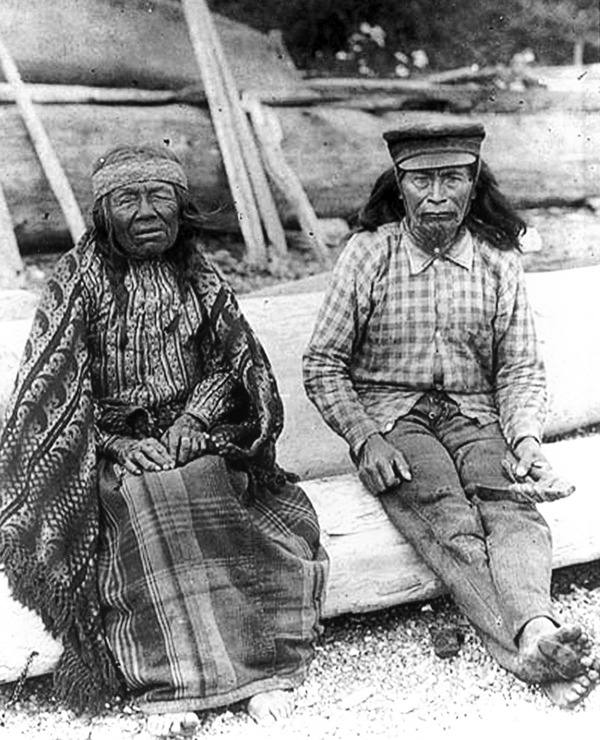While state and tribal officials begin to try and identify the Native American remains found buried under SE Pioneer Way in Oak Harbor, some residents have decided not to wait for an official answer and floated a few theories of their own.
Peggy Darst Townsdin, an amateur local historian and author, said some of the bones could very well belong to a young Lower Skagit woman who was the first wife of Captain Edward Barrington, who is Darst Townsdin’s great-great-grandfather.
“We never really knew what happened to her other than she died,” Darst Townsdin said.
Barrington, one of the city’s early pioneers, married the woman and renamed her Victoria shortly after his arrival in Oak Harbor in the mid-19th century. According to Darst Townsdin, she died of small pox sometime between 1859 and 1865.
As was consistent to the time period, it’s possible that she was buried in a small family plot on Barrington’s property, which was located in about the same place where the bones were discovered June 16 on Pioneer Way.
“If the bones are from the 1850s or 1860s, it could be hers,” Darst Townsdin said.
While she can’t be sure, Darst Townsdin said the possibility was enough for her to lay flowers near the excavation site late Thursday evening.
Authorities at the state Department of Department of Archaeology and Historic Preservation in Olympia were informed of Victoria’s death and her possible burial on or near the site. As of Monday morning, agency Director Allyson Brooks said an expert that inspected the bones over the weekend determined that they are from at least three individuals and all were Native American.
Although she didn’t comment on whether one of them could be Victoria, she did say family plots were allowed until about 65 years ago.
“You could bury people in your backyard until 1946,” Brooks said.
However, it could very well be that the bones predate Victoria. Guy Tasa, the physical anthropologist that examined the bones, said that they were found in deposits consistent with prehistoric site deposits, which lead him to believe they are at least a few hundred years old.
If they end up being more recent, Darst Townsdin speculated that they could belong to a man known to history as Tom the Canoe Maker. He and his wife spent their whole lives living on the waterfront near Barrington’s property in Oak Harbor.
Darst Townsdin could not name Tom’s wife and was unsure of the exact time frame that he lived but speculated that it was around the turn of the century. Again, she said it could be their bones that were found buried under Pioneer Way.
“Who knows, it could be them,” Darst Townsdin said.
Victoria, Tom and his wife are all believed to have been Lower Skagit, the predominant tribe on Central and North Whidbey, according to Rick Castellano, director of the Island County Historical Society museum in Coupeville.
“This was their territory pretty much all the way up to Deception Pass,” he said.
South Whidbey was dominated by members of the Snohomish Tribe. According to Castellano, the boundary between the two tribes was close to the line that divides the south end today, the area around the phone booth on Classic Road.
The highest concentration of Native Americans was around Penn Cove. At one time, the area is believed to have been home to four Lower Skagit villages, Castellano said.
As for Oak Harbor, he was less sure about its history. While he wasn’t aware of any villages, he did say that there was known activity around Maylor’s Point, though just what that was he could not say.
Attempts to reach representatives of the Swinomish Tribal Community, a reservation home to a variety of Coast Salish peoples, including Lower Skagit, were unsuccessful.
Castellano was able to confirm that there has been a Native American presence on Whidbey Island for a very long time. While some date their arrival around the 1300s, other archeological evidence, such as some discovered stone tools, may suggest a history that goes back much further.
“They go back 15,000 years,” Castellano said.



